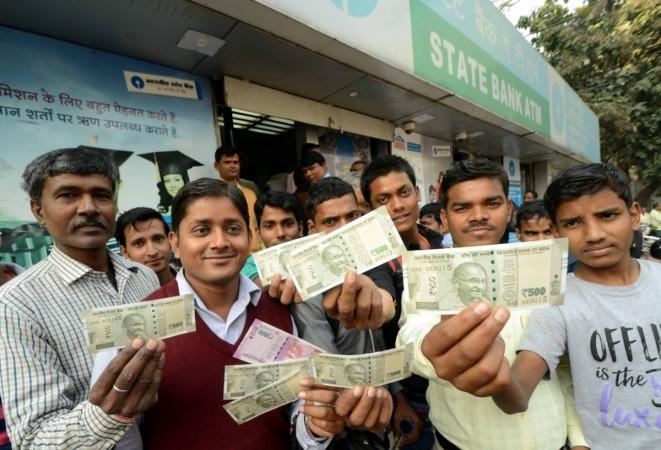
The Economic Survey has been tabled in Parliament. Here are the highlights of the report:
On economic growth rate projections
1. GDP growth estimate for FY2017 slashed to 6.50-6.75 percent from the earlier 7.1 percent.
2. Growth rate for FY2018 pegged at 6.75-7.50 percent.
On remonetisation
Cash squeeze will be eliminated by April 2017.
On universal basic income (UBI)
UBI that reduces poverty to 0.5 percent would cost between 4-5 percent of GDP, assuming that those in the top 25 percent income bracket do not participate. It is a powerful idea whose time even if not ripe for implementation, is ripe for serious discussion.
On real estate prices in 8 select cities
The weighted average price of real estate in eight major cities which was already on a declining trend fell further after November 8, 2016 with the announcement of demonetisation.
Chief Economic Adviser Arvind Subramanian has started tweeting on Economic Survey 2017 even as the Modi government has released the report. The Survey talks about how universal basic income (UBI) would impact the GDP even as he says it's time to discuss, if not implement, while the GDP growth estimate for FY2017 has been cut to 6.50-6.75 percent from the earlier 7.1 percent.
"The cash squeeze in the meantime will have significant implications for GDP, reducing 2016-17 growth by ¼ to ½ percentage points compared to the baseline of 7 percent."
PM Narendra Modi hoped that the Budget Session will be a fruitful one with debates on all topics including Budget 2017.
The Economic Survey 2017 will be tabled in the Parliament on Tuesday (January 31), coinciding with the commencement of the Budget Session of Parliament that will last till April 12 (subject to exigencies of government business). Here are the top five things to look for in the Survey that is both a review as well as a forward-looking document to make sense of Budget 2017 that will be presented on February 1.
Sensex, Nifty LIVE Updates: Markets in red ahead of Economic Survey 2017; Idea Cellular gains 11%
Demonetisation, fiscal dividend and corruption
Till date, there are no authentic estimates on how much of the ~Rs 15.44 lakh crore demonetised money has returned to the banking system. This is crucial, as the difference between the amount returned and the original amount (~Rs 15.44 lakh crore) would constitute "fiscal dividend" for the Modi government. Of course, the deadline for the return of such banned notes is March 31, 2017 and therefore, it would be inappropriate to expect numbers from the RBI at this point of time. But the Survey can give an update as of January 2017.
FY2017 GDP estimates, fiscal deficit target
The two projections for India's economic growth rate for the current fiscal are 7.1 percent, one by the Central government a few days ago and the other by the Reserve Bank of India (RBI). The Central government estimate explicitly said that it did not factor in the slowdown induced by demonetisation. Therefore, it would be interesting to look for the Survey's estimate for this fiscal and the next financial year.
Read: RBI retains repo rate, slashes GDP growth rate forecast for FY2017
On the fiscal deficit front, it would be interesting to know if the government is confident of achieving its target of reigning in the deficit at 3.5 percent of the gross domestic product (GDP) for the current fiscal as envisaged in the budget presented last year.
Views on universal basic income (UBI)
This could be the theme of Economic Survey 2017 in the context of the concept gaining popularity globally as a tool to address economic inequalities and raise standards of living for those surviving on meagre income. In the context of India, there is speculation that the UBI could be repackaged to subsume the rural employment guarantee scheme (MNREGS) and make it populist so as to appeal to voters in the upcoming Assembly elections to five states. It could come with riders such as seeding with Aadhaar and designed so as to boost the digital economy push.
Digital economy push
To counter the cash crunch and nudge people to go digital, the Modi government announced a slew of incentives early last month in addition to lucky draws at the end of December 2016. It would be interesting to see if the Survey — authored by the Chief Economic Advisor Arvind Subramanian — provides insights on how the digital economy could be given a fillip, either with or without incentives.
Disinvestment target
Last year, the Survey scaled down the FY2016 target from disinvestment proceeds from Rs 69,500 crore to Rs 25,000 crore in its revised estimates, citing "highly uncertain market conditions prevalent for most part of the year." For the current fiscal, the government has collected Rs 23,528 crore as against the target of Rs 56,500 crore, according to a January 3, 2017 finance ministry update.
Besides, the Economic Survey is also expected to throw light on subsidy bill, government debt, trade deficit, non-performing assets of banks, among other aspects of the economy.
The Economic Survey has various chapters including an overview of the economy, public finance, external sector, monetary management and human development indicators.














